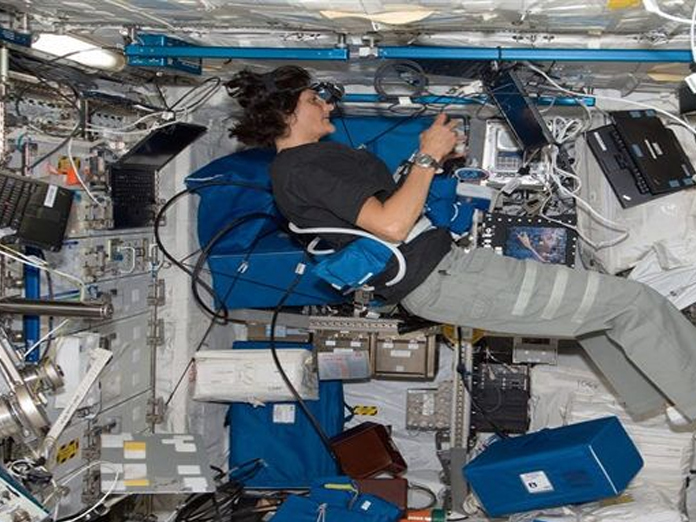Prolonged space missions may affect size, density of spinal muscles

Astronauts who spend six months or more on the International Space Station ISS are likely to have significant reductions in the size and density of spinal muscles after returning to Earth, reports a study
Astronauts who spend six months or more on the International Space Station (ISS) are likely to have significant reductions in the size and density of spinal muscles after returning to Earth, reports a study.
In the study, researchers from the Massachusetts Institute of Technology (MIT) analysed computed tomography (CT) scans of the lumbar (lower) spine in 17 astronauts and cosmonauts who flew missions on the ISS.
Scans obtained before and after the missions were analysed to determine changes in the size and composition of the paraspinal muscles -- located posterior to (behind) the spinal column. The average time in space was six months.
Running up and down the spine, the paraspinal muscles play a key role in spinal movement and posture.
The findings showed that spending an average of six months in space led to a decrease in their trunk muscles area, increased fatty tissue, which may also contribute to the back pain commonly reported in astronauts.
These changes in muscle composition, particularly increased fatty infiltration, continued to be present up to four years after returning to Earth.
"As NASA plans for future missions to Mars and beyond, these results can be used to guide future countermeasures to mitigate declines in trunk muscle morphology and associated functional deficits," said Katelyn Burkhart from MIT.
Previous studies have found reduced paraspinal muscle mass after a prolonged time in space, suggesting that muscle decline may occur without the resistance provided by gravity.
The new CT scans, published in the journal Spine, showed that for individual paraspinal muscles, the muscle size decreased by 4.6 to 8.8 per cent. In follow-up scans performed one year later, size returned at least to normal for all muscles.
As a result of increases in the amount of fatty tissue present in the paraspinal muscles, the astronauts' muscle density, which is inversely related to fat content decreased by 5.9 to 8.8 per cent.
While most muscles' composition returned to normal by one year, for quadratus lumborum and psoas muscles the fat content remained above pre-flight values even two to four years after the astronaut returned from space.














